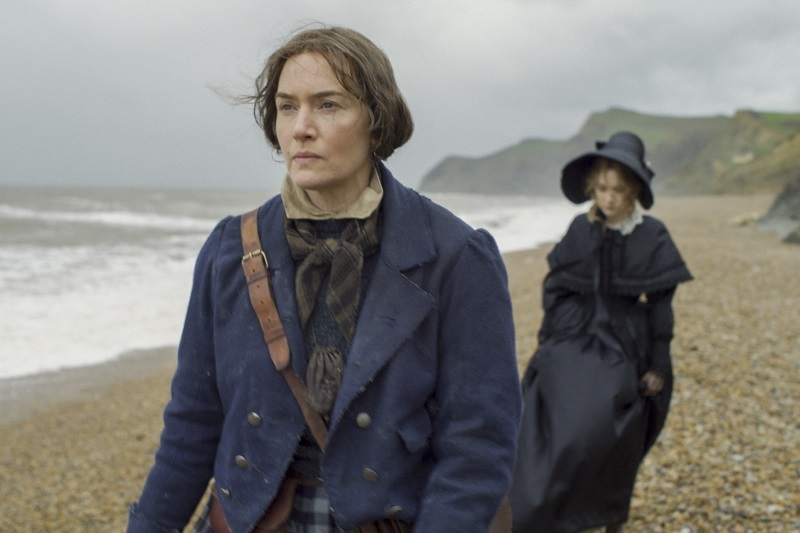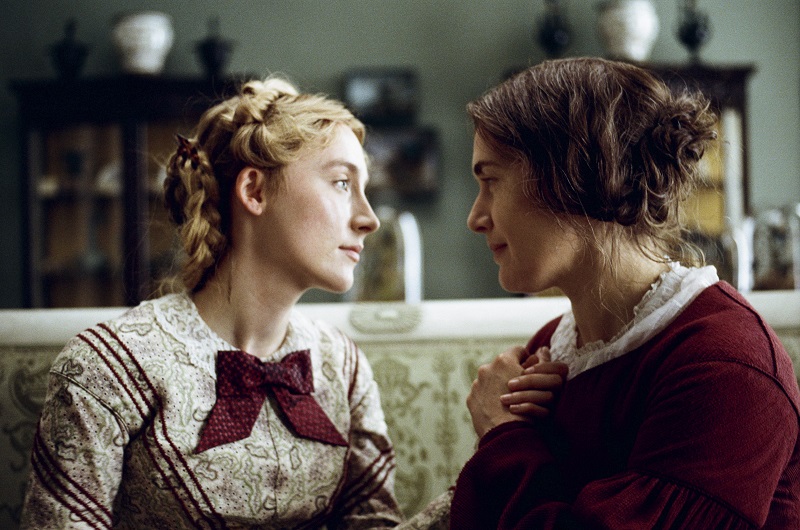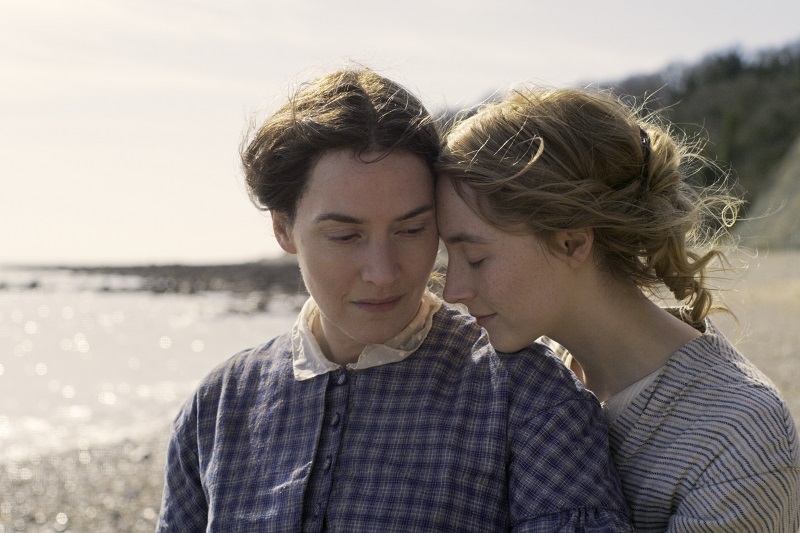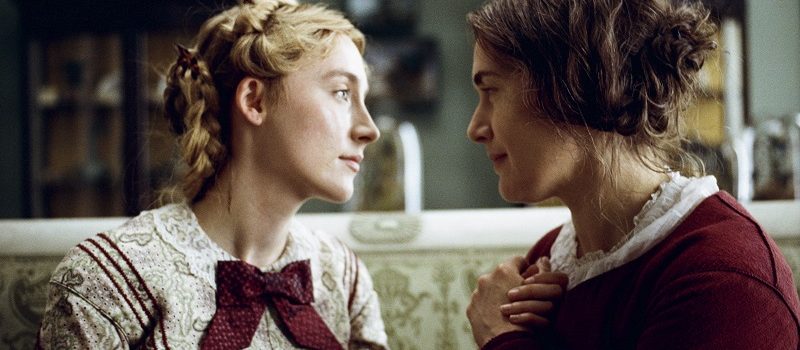Francis Lee has made an impressive sophomore film effort after his first film, 2017’s God’s Own Country. Lee wrote and directed the romantic period piece Ammonite and the romance at its heart is revolutionary, especially given the fact that this is 1840s England—not exactly a hotbed of lesbian support.

Kate Winslet is Mary Anning, a revered fossil hunter who is well thought of in scientific circles—not an easy achievement for a woman in the male-dominated scientific field. She lives with her mother Molly (Gemma Jones), in the quaint seaside town of Lyme Regis West Dorset—which also possesses the moniker the Jurassic Coast.
Roderick Murchison (James McArdle) has come to Lyme, almost as a pilgrimage. He is a lauded member of the British scientific community, who hopes to get first-hand insight into what it is that Anning looks for in her fossil hunting. It is not simply the discovering of these items that Anning is so endeared by those in London who benefit from her work. What she does with the rock and sand as she delicately turns a mess into something magnificent.
Murchison has brought his wife, Charlotte (Ronan), to the seaside village with the hope that she can get over her melancholy. It is eluded to that they tried to have a baby and lost it—whether upon birth, early in its life, or even through a miscarriage. When she comes down with a fever and he must return to London, he pays Mary to “tutor” her in the art of fossil finding. In the short term, of course, Mary must look after Charlotte until she is better.
The town medicine man, Dr. Lieberson (Alec Secareanu), provides the most beneficial of medical advice to Mary and seems a tad taken with her as well. Unfortunately, he is barking up the wrong tree. Mary’s sexuality is never a given, but it is teased through a strained relationship with another unmarried woman who lives in town. Obviously, Charlotte is a seemingly happily married woman. But over the course of her illness and recovery, there is an undeniable spark between the two that Lee has terrifically teased.
Ronan achieves something that not one soul seems to be able to do—breakthrough Mary’s guarded front. The fossil finder is short with folks and is not the best people person by a longshot. Yet, over the course of Charlotte’s recovery, we learn much about Mary that few have been able to discern. It is not simply an attraction that is arising between the two, it is a core personal connection. Meanwhile, Charlotte never states as much, but her marriage to Roderick is itself cold.

The viewers were given a brief, but efficient, window into the marriage of Roderick and Charlotte. It was not one filled with love and adoration. Perhaps it was an arranged marriage, who knows. Lee achieves so much with so little when it comes to giving us a view of the Murchison marriage. As such, one could see how Charlotte would be drawn to Mary. Her opinions, her thoughts, heck… her mind, is respected by Mary—something vacantly absent from Roderick. In fact, what little we experience the Murchisons, one thing is constant—Roderick gives off the sentiment that his wife is just continually “in the way.”
Charlotte gets anything but that from Mary. But it isn’t all smooth sailing with these two. Lee orchestrates a relationship that has to be private for a myriad of reasons. As such, any issues between the two can only be addressed when they are alone—complicating matters.
But make no mistake, there is a sexual chemistry between the two that is electric.

The issue with Ammonite is never in the performance realm. Both actresses—honestly, the entire ensemble—puts on an acting clinic of the highest order.
Lee’s film feels clunky at times. Some scenes have an abruptness to them that hinders our connection and investment in these characters and as such, their actions. The landscape of the 1840s found gay relationships not only frowned upon, but they were illegal. The viewer requires a tsunami of emotive tethering between our hearts and those onscreen. We not only need to pull for these two to make it, but there has to be a reason “why” too.
Over the course of the two-hour running time, there are plenty of scenes involving Charlotte and Mary. There is a certain amount of exposition, sure, but for the most part, it is all forward-moving dialogue that pushes the storyline further. When Charlotte is more than healed from her illness and it is clear that her melancholy has subsided, her husband re-appears. If we think about it, one had to know that this action was coming. Yet it still feels incredibly abrupt and leaves us hanging when it comes to any kind of closure between Mary and Charlotte.
In fact, there is no closing sentiment. It feels painfully unexpected, which is a fascinating choice.
Grade: B

